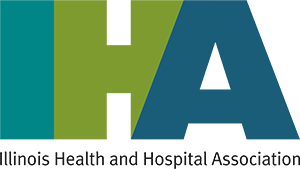IHA Daily Briefing: Jan. 31
In Today’s Issue
TJC Updates Emergency, Ambulatory Care Guidelines
Paxlovid Not Authorized for Emergency Use After March 8
Federal Action to Increase Access to Sickle Cell Disease Treatments
Utility Failures in Healthcare Toolkit
COVID-19 Information
Briefly Noted
The Joint Commission Updates Emergency, Ambulatory Care Guidelines
Effective July 1, The Joint Commission (TJC) has released updated guidelines for emergency management (EM) and ambulatory care programs. The changes in the EM chapter include a new numbering system, elimination of redundant requirements, and the addition of new requirements. This restructuring resulted in a more than 40% reduction in the number of elements of performance in the Ambulatory Care Accreditation Program.
“The goal of the rewrite was to help health care organizations to develop more comprehensive EM programs and to better prepare for the health, safety, and security needs of their facilities, staff, patient populations, and communities during emergencies or disasters (such as the COVID-19 pandemic),” TJC said in a Jan. 24 news release.
TJC said it began conducting a critical analysis of its EM chapter in late 2019. During the height of the COVID-19 pandemic, TJC received numerous inquiries pertaining to emergency plans and response procedures. Based on the work already being performed on the EM chapter and the questions and issues that arose during the pandemic, TJC said the entire EM chapter was restructured to provide a meaningful framework for a successful emergency management program.
Paxlovid Not Authorized for Emergency Use After March 8
The Food and Drug Administration (FDA) has announced that Paxlovid will no longer be authorized for emergency use after March 8, regardless of the labeled or extended expiration date. Providers can dispense unexpired Paxlovid labeled for emergency use (EUA-labeled Paxlovid) to patients through March 8. After that date, expired EUA-labeled Paxlovid must be returned to the manufacturer or disposed of in accordance with federal, state and local regulations.
The FDA noted that in May 2023, the agency approved Pfizer’s new drug application for Paxlovid to treat mild-to-moderate COVID-19 in adults at high risk for progression to severe COVID-19. Paxlovid labeled under this new drug applications will continue to be authorized for emergency use to treat eligible pediatric patients.
Federal Action to Increase Access to Sickle Cell Disease Treatments
The Biden-Harris Administration has announced that sickle cell disease (SCD) will be the first focus of the Cell and Gene Therapy (CGT) Access Model, which was initially announced in February 2023. The model is designed to improve health outcomes, increase access to cell and gene therapies, and lower healthcare costs for some of the nation’s most vulnerable populations.
Over the next year, CMS will partner with participating states and manufacturers to build a framework that expands access to gene therapies for the treatment of SCD. Under the model, CMS will negotiate an outcomes-based agreement with participating manufacturers, which will tie pricing for SCD treatments to whether the therapy improves health outcomes for people with Medicaid. Negotiations will also include additional pricing rebates and a standardized access policy. Participating states will then decide whether to enter into an agreement with manufacturers based on the negotiated terms and offer the agreed-upon standard access policy in exchange for rebates as negotiated by CMS. As part of the CGT Access Model, CMS will negotiate financial and clinical outcome measures with drug manufacturers and then reconcile data, monitor results, and evaluate outcomes. The CGT Access Model will begin in January 2025, and states may choose to begin participation at a time of their choosing between January 2025 and January 2026. Click here to access a CGT fact sheet.
Sickle cell disease is an extremely painful condition, which disproportionately impacts Black Americans and has had limited treatment options. In the U.S., more than 100,000 people live with SCD. Individuals with the disease have a shorter life expectancy, by more than 20 years, compared to someone living without SCD. Additionally, many long-term health complications from SCD—including stroke, acute chest syndrome and chronic end-organ damage—can lead to higher rates of emergency department visits and hospitalizations.
Utility Failures in Healthcare Toolkit
Utility failures are a major concern for healthcare and may cause substantial harm to patients, staff, and facilities. Threats include infrastructure damage due to natural disasters and other incidents, planned outages to relieve stress on services or prevent other hazards, and malicious acts such as physical and cyber sabotage. It is also important to note the cascading effects a failure of one utility may have on others; more than one utility may fail simultaneously or sequentially.
In response, the Administration for Strategic Preparedness and Response created a suite of tip sheets to assist healthcare facility managers and emergency planners in identifying issues to consider when planning for and responding to various types of utility failures. Click here to access the tip sheets, which provide planning and response considerations for utility failures, including electricity, fuel, oxygen, telecommunications and information technology, and water.
COVID-19 Information
The Illinois Dept. of Public Health (IDPH) has launched a weekly Infectious Respiratory Disease Surveillance Dashboard that will be updated weekly on Friday. This report provides the public with the latest data on hospital visits, seasonal trends, lab test positivity and demographic data.
Click here to visit the IDPH COVID-19 resources webpage. IDPH will continue to report the weekly number of people with COVID-19 admitted to hospitals from emergency departments, deaths and vaccinations, with COVID-19, influenza and respiratory syncytial virus information also reported through the dashboard of the Illinois Wastewater Surveillance System.
Briefly Noted
America’s Blood Centers and the Association of Blood Donor Professionals released a Statistics and Public Messaging Guide that provides information on blood donation, including collection information and donor demographics. Data show that annual blood donation fell from 7.3 million donors in 2019, to 6.5 million donors in 2021—an 11% drop. There was a notable 60.7% drop in donations among 16- to 18-year-olds between 2019 and 2021, which is likely linked to limits on blood drives at school campuses due to the COVID-19 pandemic.

